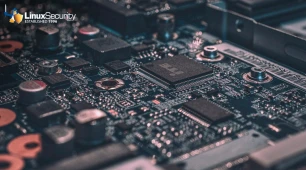
Linux 6.13 kernel development has unlocked promising storage technology advancements with numerous block subsystem improvements, particularly regarding NVMe (Non-Volatile Memory Express) support. These enhancements seek to boost performance, security, and manageability, so Linux administrators must stay abreast of and prepare for these updates.
Understanding NVMe 2.1 Specification Compliance
One major upgrade in Linux 6.13 is its kernel's compliance with the NVMe 2.1 specification, published last August and offering various features like live migration of PCIe NVMe controllers, enhanced security measures, and manageability improvements. By adhering to this standard, Linux stays at the forefront of storage technology while expanding its ability to support next-gen hardware.
Compliance with NVMe 2.1 brings significant security improvements, especially by strengthening data protection and encryption mechanisms within NVMe storage devices. These enhancements are essential for administrators looking to protect sensitive information while taking advantage of high-speed storage solutions. Moreover, their implementation not only strengthens Linux's security framework but also ensures its ability to take full advantage of advanced storage technologies.
Key Additions in Linux 6.13 NVMe & Their Implications
 The Linux 6.13 NVMe code introduces several notable features mandated by NVMe 2.1 specification that significantly affect system management and performance. Notably, integration of ID Namespace and Command Sets facilitates better organization of storage resources by giving administrators more granular control over configurations. This allows for more precise and efficient storage handling, improving system operations.
The Linux 6.13 NVMe code introduces several notable features mandated by NVMe 2.1 specification that significantly affect system management and performance. Notably, integration of ID Namespace and Command Sets facilitates better organization of storage resources by giving administrators more granular control over configurations. This allows for more precise and efficient storage handling, improving system operations.
Furthermore, the new support for rotational media ensures that the kernel accurately recognizes and manages storage devices like hard drives. This feature is especially beneficial in mixed storage environments because it enables optimal configuration of storage hierarchies to accommodate various storage types' performance and capacity needs.
Optimized host and memory buffer allocation improves data transfers, giving systems running Linux 6.13 an edge in handling intensive workloads and large volumes of data. By optimizing memory buffer allocation, the kernel can significantly boost system performance and reliability, making it better equipped to deal with intensive workloads and volumes of data. These key additions collectively boost functionality and efficiency.
Security Impact for Linux Administrators
The advances introduced in the 6.13 kernel significantly strengthen the security posture of Linux systems. NVMe 2.1 compliance streamlines processes to increase productivity and includes advanced security protocols to safeguard against unauthorized data access or breaches. Features like Persistent Reservation and Tracing provide practical tools for upholding rigorous access controls and comprehensive audit trails, essential elements in systems requiring high-security compliance with data protection regulations. Volatile Cache Detection mechanisms within the kernel help mitigate data loss risks for systems engaged in continuous read/write operations, further strengthening security and reliability within Linux environments.
Upgrading to Linux 6.13
 Linus Torvalds' development pattern dictates a release schedule for the 6.13 kernel. As soon as these changes have been sent out, we should see it made available within several months, followed by the release of candidates. This gradual approach gives administrators ample time to prepare for this upgrade. Testing pre-releases in a controlled environment ensures compatibility and performance while helping identify potential problems before rolling them out in production environments.
Linus Torvalds' development pattern dictates a release schedule for the 6.13 kernel. As soon as these changes have been sent out, we should see it made available within several months, followed by the release of candidates. This gradual approach gives administrators ample time to prepare for this upgrade. Testing pre-releases in a controlled environment ensures compatibility and performance while helping identify potential problems before rolling them out in production environments.
Additionally, it's essential to assess hardware dependencies to see whether current setups can fully utilize NVMe 2.1 features and rotational media support, minimizing compatibility issues while ensuring a smooth transition. Finally, strategizing deployment timelines to coincide with business operations is critical. Proper planning ensures minimum downtime during upgrades, ensuring a seamless switch to Linux 6.13 for all stakeholders involved.
Our Final Thoughts on NVMe Enhancements in the 6.13 Kernel
The Linux 6.13 kernel update promises to significantly upgrade Linux administrators' experience, especially with its enhanced NVMe support, which will bring improved performance and increased security. By understanding and planning for these changes, administrators can ensure they benefit from this kernel release while protecting their systems and taking advantage of cutting-edge storage technology.
What changes are you most excited about in this upcoming release? Connect with us @lnxsec and let us know!


















